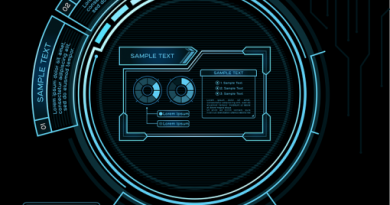Is Your Data Encryption Really Secure
Is Your Data Encryption Really Secure.How do you know that your data encryption is really secure
There are different types and methods of encrypting data. Some of the most common forms of data encryption include single file encryption, folder encryption, volume encryption, full disk encryption, and of course email encryption.
Windows XP operating system is capable of performing file and folder encryption. There are third-party tools, such as PGP Desktop, that can encrypt full disks, logical disks, files, and emails.
If you regularly deal with confidential or sensitive information, or if you are worried about personal information falling into the wrong hands, encryption may be the way to go. However, there are a few things you need to know to not have a false sense of security.
First of all, what is data encryption
Throughout ancient and modern history, humans have found many ways to conceal, conceal, and verify that information is safe or valid. For example; the ancient Babylonians in 000 BC. used something called intaglio, a process in which images and scriptures were carved or carved into stone to identify certain Babylonian merchants as they traded.
Every shop owner, or merchant, has a specific intaglio to make their mark, that way their customers know that what they are buying belongs to or was manufactured by a particular merchant.
It is slightly different from encryption, which is like digital signatures today, an unusual process that is part of data encryption.
Today, encryption is much more advanced and complex. It is used for everything from securing military secrets to keeping intellectual property secret. There are different forms of encryption techniques, some stronger or more secure than others. In its basic form, encryption can be thought of as the hiding or obfuscation of original human-readable information.
The person hiding the information must provide the person to whom they are sending the information some kind of key that allows them to decrypt the information to make sense of it. For example; I use encrypted electronic messages to be able to communicate regularly with my clients.
I do this because in certain types of projects, my clients and I discuss private information such as security holes discovered during a security assessment.
This kind of information is clearly not something we want to fall into the hands of anyone else. Most data doesn’t start encrypted so be careful
Main reason What prompted me to write this post was to point out some specific problems with data encryption. In a recent discussion with a friend of mine, he told me that he used Windows XP folder encryption to secure some of his confidential information. He asked me if I thought it was a safe method to store important documents. My answer is yes and no. The data encryption used by Windows XP is relatively secure, but the problem is that most of the data currently encrypted in the directory doesn’t start that way.
For example, consider a Word document that contains your personal financial information. You may have written this document so that you have a central location where your account numbers, social security numbers, and other private, personally identifiable information can be easily retrieved. After you finish writing the document, you move it to your secure encrypted folder.
Since it is now in a secure folder, only you can access it because only you know the passphrase that was used to generate the encryption key. For the most part, this assumption is true.
While writing this document, you may have pressed the Save button several times. Or if you’re like me, many times. I have lost long documents several times in the past and frequently hit the save button. Each time you click the Save button, a new temporary version of the file is created. This is usually saved in the folder c:\Documents and settings\”profile name”\local settings\temp.
This is done for recovery purposes and for non-conforming purposes. For example, if you make a mistake while writing a document and need to undo your action, one of these temporary files can be used to undo the action. Also, if your system or application crashes while writing a document, you can recover it from temporary files stored in this folder. You may have had to go through this before and it works great.
Now that you’ve finished your document and copied or moved it to a secure folder, your document is secure, right? Bad. Chances are the temp files in your temp directory are still there. Even if you have deleted them, chances are they can be recovered using very inexpensive or open source data recovery or recovery software.
If someone tries to gain access to your computer, hard drive, or remotely access your system in some way, chances are that the original, unencrypted version of your document could be copied. Localization.
So what can you do to ensure that the encrypted version of your files and data is the only one. There is no clear or 100% sure answer to this question, but I will share with you how I solved the problem.Change the location of unencrypted temporary files
Applications such as Microsoft Word mainly identify where to store temporary versions of your files by checking two user environment variables. One called “tmp” and the other called “temp”. These are accessible by right clicking “my computer”, selecting properties, then the “advanced” tab and clicking “environment variables”.
Here you can edit or change the default location for temporary files. One thing I should point out is that although a large number of software packages use these locations for temporary storage, it would be difficult to determine if they all do this or if they store temporary files. time in other locations. You will need to do a little investigation to determine where the different apps are hosted



